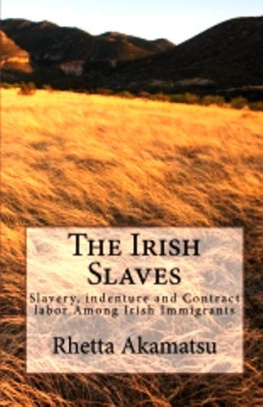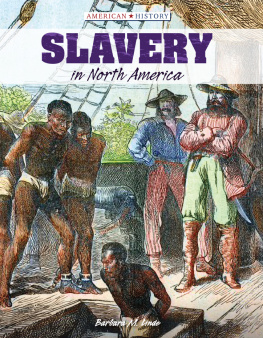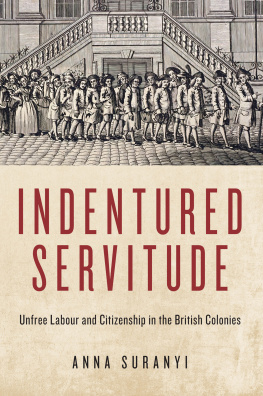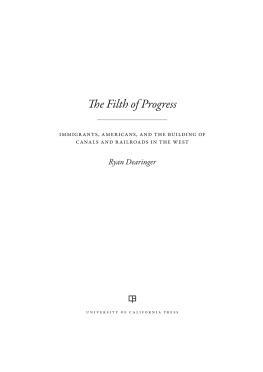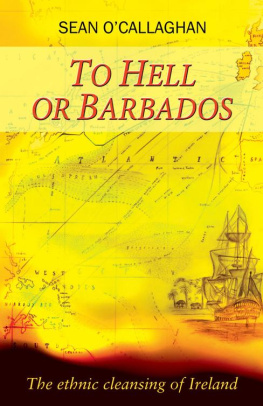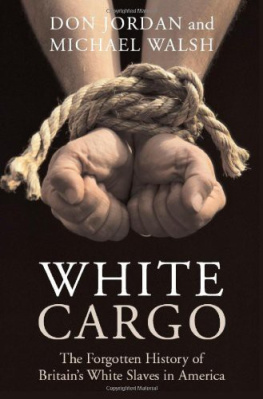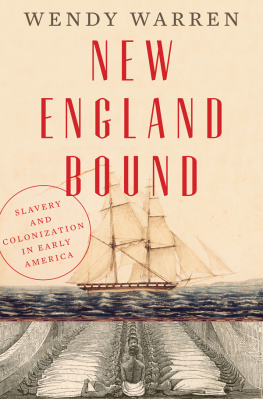THE IRISH SLAVES
Rhetta Akamatsu Copyright October 2010 TABLE OF CONTENTS
1. IRISH SLAVES: THE BACKGROUND HISTORY
2. ABOARD SHIP
3. THE WEST INDIES
4. BARBADOS
5. THE COLONIES
6. THE SPECIFIC CASE OF INDENTURED SERVANTS
7. REBELLION
8. AUSTRALIA
9. CANADA
10. FREEDOM
AFTERWORD
BIBLIOGRAPHY
IRISH SLAVES: THE BACKGROUND HISTORY At the beginning of the 17th Century, in the reign of James I of England, England faced a problem: what to do with the Irish. They had been practicing genocide against the Irish since the reign of Elizabeth, but they couldn't kill them all. Some had been banished, and some had gone into voluntary exile, but there were still just too many of them.
So James I encouraged the sale of the Irish as slaves to the New World colonies, not only America but Barbados, the West Indies, and South America. The first recorded sale of Irish slaves was to a settlement along the Amazon in South America in 1612. However, before that there were probably many unofficial arrangements, since the Irish were of no importance and details of how they were dealt with were not deemed necessary.
In addition, Irish slaves were also sold to other countries. In T he Many-headed Hydra: The Hidden History of the Revolutionary Atlantic, by Peter Linebaugh and Marcus Rediker, it is reported that a thousand Irish slaves were sold to Sweden in 1610. Later, in the 1800s, many were sent to Australia, as we will discuss later in the book.
From the 8th to the 11th century, the Irish were often captured by Vikings and sold to Spain, Scandinavia and Russia, according to Ruth Mazo Karras' book, Slavery And Society in Medeivel Scandinavia. But the Vikings were not specifically targeting the Irish. They took slaves from Britain, Scotland, Ireland, France, and everywhere else that their ships took them. The English, on the other hand, deliberately targeted the Irish, and the Scots, because at that time there was no distinction made between the Irish and the Scots.
The English had an old and virulent contempt for the Irish. In 1574, when an expedition led by the Earl of Essex slaughtered the entire population of Rathlin Island in Ulster, totalling over 600 people, one of the members of the expedition, Edward Barkley, wrote that How godly a deed it is to overthrow so wicked a race the world may judge: for my part I think there cannot be a greater sacrifice to God." (Quoted by Nicholas Canny in "The ideology of English colonisation from Ireland to America",William and Mary Quarterly, 1973.)
When the English began to target the Irish, women and children were especially vulnerable. Children were snatched up by slavers and carted off to town prisons or workhouses on spurious charges, such as "vagrancy." When the parents finally discovered where they were, if they did, and tried to claim them to take them home, the jailers demanded that they pay for the food the children had eaten while imprisoned. If they couldn't, as was usually the case, the children were then transported and sold as slaves.
In 1641, one of the periodic wars in which the Irish tried to overthrow the English disrule in their land took place. As always, this rebellion eventually failed. As a result, in the 12 years following the revolt, which was known as the Confederation War, the Irish population fell from 1,466,000 to 616,000. Over 550,000 Irishmen were killed, and at least 300,000 were sold as slaves.
The men were not allowed to take their wives and children, of course. The women and children who were left homeless and destitute had to be dealt with, so they were rounded up and sold, too. Sometimes they were sent to prisons or
workhouses, and deported from there. Sometimes they were just snatched up, either from the side of the road or from their beds, and spirited away. It is from this time the word kidnapped comes into the language.
After the 1649 conquest, Sir William Petty estimated that one-sixth of all Irish men had been shipped away and sold abroad. That made a lot of Irish women and children suddenly very easily available to the slave trade.
These men, women and children were truly slaves, not indentured servants as some have claimed. The so-called indentured servants were another part of the sad story, and we will deal with them later.
And yet even though it did not seem that things could get worse than they were under James I, when Oliver Cromwell assumed control of the English government, they got much worse indeed.
In 1652, Cromwell instigated the Ethnic Cleansing of Ireland. He demanded that all Irish people were to resettle west of the Shannon, in arid,
uninhabitable land, or be transported to the West Indies, giving up the lands that they had possessed for many generations. The majority of the Irish refused to relocate peaceably, knowing that they couldn't survive if they did. There was no grazing land for sheep, no viable land to plant crops. These Irish became outlaws on the land that had once belonged to them. Cromwell had to do whatever was necessary to see that they were removed, because their land had been promised to the troops as payment for putting down the Irish rebellion. The soldiers were encouraged to kill the Irish who refused to move; it was certainly not considered a crime. But it did not take long for Cromwell to realize that the slave trade was so profitable that it was much more lucrative to round them up and sell them. Gangs went out to fill quotas by capturing whoever came across their path; they were so industrious that they accidentally captured a number of French and English and several thousand Scots in the process. By Cromwell's death, at least 100,000 Irish men, women, and children had been sold in the West Indies, Virginia, and New England. The men were generally sold for life if they were political prisoners; the women and children were supposed to be sold for a certain period of years, after which, they were to be free, should they survive that long. For the children, the bondage was generally to be until the age of 21. It was by no means certain that they would survive that long.
The government of England negotiated deals with ships captains to carry the captives, in which the prisoners were to be sold upon delivery and the captain was to make a good profit from their sale, and return some of the money to the Crown, as in this letter from a slightly later datepreserved by the Immigrant Ships Transcribers Guild, with the original spelling:
Liverpool, England to Yorktown, Virginia 14 January 1716
Virginia
By his Majestys' Lieutenant Governor &
Commander in Cheif of this
Dominion
These are to certify that the above Lift of one
hundred & Twelve
Rebel Prisoners, Imported into this Colony in
the Ship Elizabeth & Ann,
of Liverpool, Edward Trafford Master, was
taken (by my order) upon the
arrival of the faid Ship in York River by the
officer of the Customs
there, and contains the Names of all the
Prifoners Imported in the sd
ship & that besides the said one hundres &
twelve persons, the Mafter
did Report that one other Prisoner by name
Duncan Mackfale died at sea,
which upon Examination of the other Prisoners
apeared to be true
Given under my hand at Williamsburgh this
Given under my hand at Williamsburgh this
In The Reconquest of Ireland, James Connelly describes another business arrangement between the British government and a private company to supply servants to New England:
Captain John Vernon was employed by the Commissioners for Ireland to England, and contracted in their behalf with Mr. David Sellick and the Leader under his hand to supply them with two hundred and fifty women of the Irish nation, above twelve years and under the age of forty-five, also three hundred men above twelve years and under fifty, to be found in the country within twenty miles of Cork, Youghal and Kinsale, Waterford and Wexford, to transport them into New England. This British firm alone was responsible for shipping over 6,400 girls and boys...
Next page
